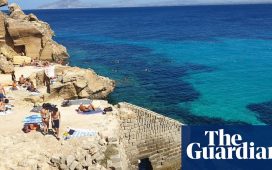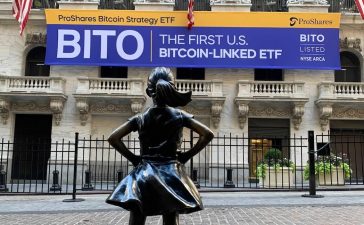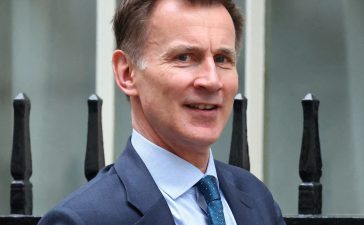Nine trains leave Kraków each weekday to climb up to Poland’s premier mountain retreat, Zakopane. In 1936, the fastest trains to Zakopane took under 2½ hours. Almost a century later, after infrastructure renewal work lasting several years, just one of those nine trainsmatches the 1936 time. Such is the state of railways in some parts of rural Poland.
Anyone in a hurry to reach Zakopane from Kraków will take the bus, which runs nonstop and takes two hours. But the train is a gentler, greener option. With time on my hands, I opt for one of the slower trains, which promises 48 intermediate stops. Yes, 48. There’s a dash of Slavic magic in the litany of stations along the route: Sieniawa, Skawina, Stronie, Stryszów, Szaflary.
We rattle south from Kraków’s main station, passing on our right St Nicholas Church, which has a fine Armenian votive cross in its garden. Then to the left is one of the two Jewish cemeteries in the Kazimierz district. Soon we are crossing the Vistula River on an impressive bridge with a complex lattice of girders. Until 1846, this meandering river marked the frontier between the Free City of Kraków (Rzeczpospolita Krakowska) and the Austro-Hungarian empire.
We shudder to a stop at Zabłocie, a community which in Kraków’s heyday as a city-state was where Habsburg bureaucrats could monitor the comings and goings there. It was from here that the salt mined at Wieliczka was shipped downriver, and the place bustled with commercial energy. These days, it is where tourists come to see the former enamelware factory featured in Steven Spielberg’s Schindler’s List.
We stop at a medley of suburban stations, many of them brand new or recently rebuilt. Sanktuarium is the most striking, serving the memorial complex and sanctuary dedicated to the late Polish pope, now canonised as Saint John Paul II. This rail route touches on many places that featured in the early life of the future pope.
Through the Beskid Hills
Our stuttering escape from Kraków affords views of modern churches, rusting railway sidings and concrete flyovers. Oriental domes in the distance signal a nightclub rather than Byzantium. We continue, slipping softly through Skawina, which for decades endured pollution from an aluminium smelter, and then cruise through orchards planted long ago by Bernardine (Franciscan) monks.
From Skawina the route south to Zakopane is single track. We are heading south, to the Tatras Mountains, near the Slovakian border, but first we cross the Beskid Hills. The beauty of this train journey today is the way the train dances with the topography. Here and there it changes direction, occasionally striking assertively south but more commonly following the warp and weft of the landscape. In places the hillsides tilt more sharply, but just occasionally the landscape opens out sufficiently to reveal glorious views of the High Tatras.
High on the hills we glimpse the monastery church of Kalwaria Zebrzydowska, where Pope John Paul II celebrated his lastmass on Polish soil in 1979. I was in the crowd on that memorable day. Here the railway cuts through a remarkable Unesco world heritage site – the 17th-century Mannerist Architectural and Park Landscape Complex and Pilgrimage Park, a sort of substitute Holy Land. This is the most ambitious of Europe’s sacri monti, and 400 years after its creation it is still in the care of the Bernardines, who stage dramatic re-enactments of Christ’s Passion at Easter.
A fellow passenger, an elderly woman with strong hands and hennaed hair, crosses herself as the train glides slowly past a monumental crucifix. Noting my interest in the passing landscape she tells me that, on some Catholic feast days, the trains make special stops to allow passengers to alight directly into the park. Few landscapes are so rich in religious symbolism as those of Kalwaria Zebrzydowska, and the complex is so huge that one might visit many times without retreading the same devotional itinerary.
Bolshevik connections
We reach the Skawa Valley, latterly reshaped by a major new dam project. The railway crosses the river on a bold new bridge then skirts the reservoir. Our train has to reverse twice as we make stop-go progress through the Beskid Hills. At Chabówka there is a remarkable collection of old steam engines in the sidings. From here we climb south, cresting a gentle summit and then dropping down to Nowy Targ, where Vladimir Ilyich Lenin was briefly imprisoned.
I always have mixed feelings about the last leg of this journey, from Nowy Targ up to Zakopane. Increasing numbers of wooden houses are a hint of the feast of vernacular architecture which gives such style to the Polish Tatras. But at this point the railway also parallels the main highway to Zakopane, which is lined by billboards and fast food outlets. We cross the 700-metre contour just before Biały Dunajec, the village where Lenin once lived. “This is almost Russia,” Lenin wrote in 1913 of this area, alluding to the fact that the border of the Tsarist empire was not far away. Our train pauses at Poronin station, to which Lenin would regularly cycle to collect his post. A landmark Bolshevik congress was held in the village in 1913.
Ahead, the distinct line of the High Tatras marks the southern sky. These are the hills the young future Pope would regularly roam, following the paths Lenin had hiked while pondering developments back in Russia. For poets and philosophers, for future saints and revolutionaries, the railway to Zakopane has long been laced with creative energy and the promise of pure mountain air.
“Next stop Zakopane,” says the guard in both English and Polish as he walks through the train. And a few minutes later, we slide to a stop at Zakopane’s recently refurbished station. It’s 835 metres above sea level, so snow lingers well into spring. But I am well prepared and head out into the hills, following a path I remember being signposted years ago as one of Lenin’s regular routes. Pieties have changed, and these days pictures of John Paul II are affixed to a tree by the trail.
Travel facts
The fastest daily train from Kraków to Zakopane is a mid-morning departure taking 2hrs 26mins. All other trains take over three hours, the slowest almost four hours. The one-way fare on the slow, local trains is 22.50 złoty (£4.50). Tickets must be bought at the station before boarding the train. Only on the faster trains can seats be booked, at intercity.pl. Fares vary, but advance tickets are typically £6 second class and £11 first class.
Nicky Gardner is co-author 0f Europe by Rail: the Definitive Guide. The 17th edition was reprinted this month and is available from the Guardian Bookshop











